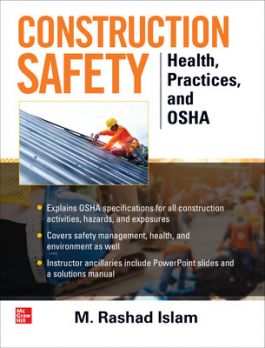OSHA stayed busy in fiscal year 2019. The agency trained a record 1,392,611 workers on safety and health requirements through its various educational programs. OSHA also helped small employers identify 137,885 workplace hazards through its On-Site Consultation Program, which OSHA estimates protected 3.2 million workers from potential harm. Of particular note to employers, OSHA also continued a trend of increased onsite inspections, conducting 33,401 inspections to address hazards related to trenching, falls, chemical exposure, silica and other hazards. Employers should not expect much to change in 2020.
OSHA recently released its regulatory agenda for 2020. The highlights of the agenda include the following OSHA priorities:
- Mechanical Power Presses: OSHA plans to publish a Request for Information (RFI) in July 2020 soliciting information from the public regarding potential updates to its standard for mechanical power presses. Potential revisions include addressing the use of hydraulic or pneumatic power presses and potential technological updates to the standard, which is approximately 40 years old.
- Powered Industrial Trucks: In March 2019, OSHA issued an RFI to assess whether to make changes to the existing standards for locations of use, maintenance, training and operation of powered industrial trucks (fork trucks, tractors, lift trucks and motorized hand trucks). The current standard relies on 50-year-old standards issued by the American National Standards Institute (ANSI). OSHA also intends to propose updates for the design and construction of powered industrial trucks, which would acknowledge and account for changes to the ANSI standards over the last 45 years, as well as relevant technological advancements. For example, there are currently 19 types of powered industrial trucks, but the current standard only covers 11 types. According to OSHA, the purpose of these proposed updates is to improve worker safety and health by ensuring that its standards reflect current industry practice and state-of-the-art technology.
- Lock-Out/Tag-Out: OSHA will analyze comments received in response to the RFI it issued in May 2019 regarding the use of computer-based controls of hazardous energy (e.g., mechanical, electrical, pneumatic, chemical and radiation). Although computer-based controls are now common due to the modernization of equipment design, the use of these controls conflicts with the current OSHA lock-out/tag-out standard. OSHA may hold a stakeholder meeting and open a public docket to explore the issue.
- Prevention of Workplace Violence in Health Care and Social Assistance: OSHA intends to initiate a Small Business Regulatory Enforcement Fairness Act (SBREFA) review panel this month to address the creation of a standard addressing workplace violence in the health care and social assistance industries. This process began in December 2016, when OSHA issued an RFI soliciting information regarding the impact of workplace violence and prevention strategies, which OSHA currently addresses under Section 5(a)(1) of the Occupational Safety and Health Act, i.e., the “general duty clause.” In January 2017, OSHA granted petitions for a workplace violence standard submitted by a coalition of labor unions and by the National Nurses United.
-
Crystalline Silica: Under the current rule for Occupational Exposure to Respirable Crystalline Silica in the construction industry, construction employers can perform certain tasks by using dust control methods known to be effective (i.e., Table 1 of the standard). Employers who follow Table 1 correctly need not measure their workers’ exposure to silica and are exempt from the permissible exposure limit (PEL). Depending on the information received in response to the RFI issued in August 2019, OSHA may revise Table 1 to account for:
- the effectiveness of control measures not currently included for tasks and tools listed in Table 1; and
- tasks and tools involving exposure to silica that are not currently listed in Table 1, along with information on the effectiveness of dust control methods in limiting worker exposure to silica when performing those operations.
- Walking-Working Surfaces: OSHA intends to clarify the requirements for stair rail systems to make them clearer. OSHA plans to issue a Notice of Proposed Rulemaking in April 2020 to address confusion caused by this standard.
Employers should note that OSHA’s 2020 agenda could change, as the agency may drop some of these efforts or take on new priorities throughout the year. However, the agenda also serves as a barometer for OSHA’s enforcement priorities this year. Employers should consider how OSHA’s 2020 regulatory priorities and proposed changes might affect their workforces and whether updating their current practices might prevent future OSHA enforcement actions. Before making any changes, employers should consult with legal counsel to ensure compliance with OSHA standards, directives, and guidance.
Source: JD Supra








